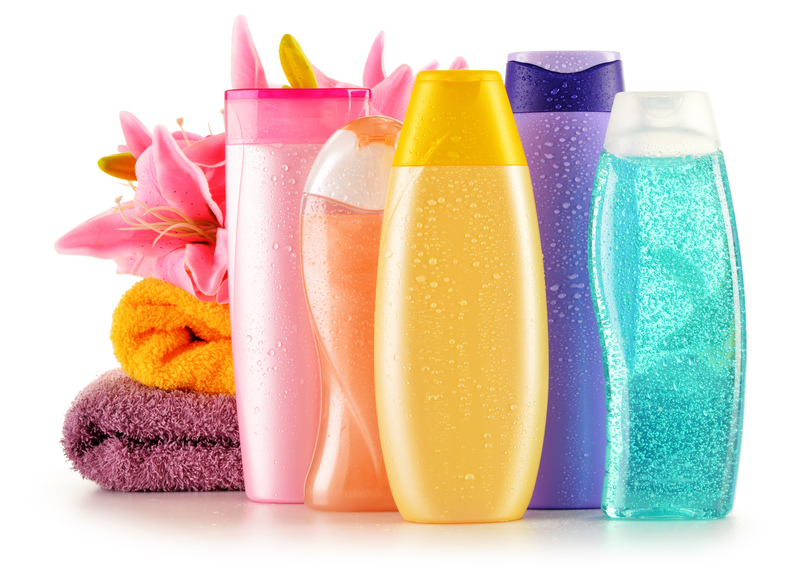Key Practices to Enhance the Longevity of Your Velvet Curtains
Posted on 18/05/2025
Key Practices to Enhance the Longevity of Your Velvet Curtains
Velvet curtains offer an undeniable touch of elegance, sophistication, and texture to any living space. Their lustrous sheen and soft drape make them a popular choice among homeowners and interior designers alike. However, like all luxurious textiles, velvet requires specific care and attention to maintain its beauty and prolong its lifespan. In this guide, we explore key practices to enhance the longevity of your velvet curtains--from cleaning routines to preservation tips, discover how to keep your velvet drapes looking impeccable for years to come.
Why Velvet Curtains Need Special Care
Velvet is a unique fabric characterized by its soft, plush pile and rich visual appeal. However, this delicate pile structure also makes it susceptible to crushing, dust accumulation, and wear if not handled properly. Understanding the challenges of maintaining velvet is the first step to ensuring your velvet window treatments remain as luxurious as the day you installed them.
- Delicate fibers: Velvet is typically made from silk, cotton, or synthetic fibers--it's the weave and pile that make it prone to damage.
- Dust magnets: The surface attracts and retains dust more noticeably than smoother fabrics.
- Sensitive to moisture and sunlight: Both can cause fading, staining, or distortion of the pile.

Best Practices for Cleaning Velvet Curtains
1. Regular Dusting: Keep It Fresh and Fluffy
Routine dusting is perhaps the single most important habit for extending the life of your velvet curtains. Use a soft-bristled brush or a vacuum with a gentle upholstery attachment at least once a week to remove loose debris and prevent dust from settling into the fibers.
- Brush in the direction of the nap (the natural lay of the fibers) to avoid matting.
- Work from the top of the curtain down to prevent redistributing dust.
- Never use a stiff brush, as it can crush the pile and create bald spots.
2. Spot Cleaning: Address Stains Immediately
Spills and stains require immediate attention on velvet. Follow these steps to prevent long-term damage:
- Blot, don't rub: Use a clean, dry cloth to gently blot up spills, absorbing as much liquid as possible without pressing it deeper into the fibers.
- Dab with mild detergent: Mix a small amount of gentle detergent with water and lightly apply using a soft cloth. Rinse with a clean, damp cloth.
- Allow to air-dry: Never use heat or direct sunlight to dry velvet. Once the fabric is damp, brush the pile upright with a soft brush as it dries.
3. Professional Cleaning: When in Doubt, Call Experts
Certain stains, heavy soiling, or annual deep cleans are best handled by a professional curtain cleaner experienced with velvet. Many velvet curtains have specific care requirements that may not be suitable for home washing. Always check the care label for recommended cleaning methods. Professional cleaning helps maintain the pile's texture and prevents shrinkage or color loss.
4. Avoid Machine Washing and Harsh Chemicals
Most velvet, especially natural fiber types, can be damaged by washing machines or harsh cleaning agents. Never use bleach, ammonia, or abrasive cleaners on velvet. If you must wash at home, consider these guidelines:
- Use only cold water and very mild detergent.
- Consider hand-washing or spot cleaning only.
- Hang or lay curtains flat to air dry; never wring or twist.
Strategies for Everyday Maintenance of Velvet Curtains
1. Minimize Exposure to Sunlight
Direct sunlight causes colors to fade and fibers to weaken over time. To enhance the longevity of your velvet drapes:
- Install sheer liners behind velvet curtains to diffuse sunlight.
- Draw curtains during the brightest parts of the day.
- Rotate curtain panels every few months to ensure even exposure.
2. Control Humidity and Moisture
Velvet absorbs moisture easily, which can lead to mildew, mold, or shrinkage. Maintain optimal indoor humidity (between 40-60%) with dehumidifiers if you live in a damp climate. Avoid hanging velvet curtains in constantly damp areas such as bathrooms or kitchens.
3. Maintain Proper Hanging Practices
The way you hang your velvet window treatments can also impact their lifespan:
- Always use sturdy rods or tracks to support the weight of the fabric and avoid stretching.
- Ensure hooks and rings are smooth and free from rust or snags.
- Allow curtains to fall gracefully--don't bunch or over-gather the fabric, as this can crease the pile.
4. Fluff and Steam the Pile Regularly
Crushed or flattened pile can make velvet look tired and worn. Gently steam your curtains with a handheld garment steamer to refresh the fabric and lift the pile. For best results:
- Steam from the back of the curtain to avoid water spots on the front.
- Keep the steamer moving and at least an inch away from the fabric.
- Use a soft, dry brush to further lift the pile if needed.
5. Avoid Over-Touching and Frequent Handling
Excessive touching, tugging, or opening/closing can transfer oils from your skin and contribute to premature wear in high-contact areas. Install tiebacks or holdbacks to keep curtains elegantly open without excessive handling.
Choosing the Right Velvet Curtain for Durability
Select High-Quality Velvet
Not all velvet is created equal. When shopping for durable velvet curtains, consider:
- Fiber content: Cotton velvet is plush but can be more sensitive, while synthetic velvets like polyester are sturdier and frequently easier to care for.
- Weave density: Higher thread count and denser pile generally indicate greater durability and resistance to flattening.
- Colorfastness: Opt for colorfast dyes to minimize fading over time.
Opt for Lined or Interlined Curtains
Lined velvet curtains offer enhanced protection against sunlight, dust, and temperature fluctuations, further extending their life. An interlining (a third, often flannel layer) adds both insulation and helps maintain the curtain's drape and fullness.
Storing Velvet Curtains Properly
1. Clean Before Storing
Never store velvet window treatments without first removing dust and stains. Dirt can set in and become impossible to remove later.
2. Use Proper Storage Methods
- Roll, don't fold: Folding velvet creates permanent creases. Carefully roll the curtains around a clean, wide tube or rod.
- Store in breathable fabric bags: Avoid plastic, which traps moisture and encourages mold growth.
- Keep in a cool, dry, dark location to prevent fading and mildew.
3. Inspect Periodically
If storing long-term, inspect your velvet curtains every few months for signs of pest activity, mold, or moisture damage. Air them out when needed to keep them fresh and mold-free.

FAQs: Maintaining and Caring for Velvet Curtains
How often should velvet curtains be cleaned?
Weekly dusting is ideal, while professional cleaning or deep cleaning should be done once a year or as needed based on location and exposure.
Can I iron my velvet curtains?
Never iron directly on velvet, as this will crush the pile. Use a steamer on the reverse side or, if ironing is absolutely necessary, place a thick towel between the iron and the fabric, using the lowest heat.
How do I fix a crushed pile?
Gently apply steam and use a soft brush to lift the nap. Persistent crushing may require professional attention.
Are velvet curtains suitable for all rooms?
While velvet window treatments are suitable for living rooms, bedrooms, and dining rooms, avoid placing them in high-humidity or high-traffic areas like kitchens and bathrooms.
Can I use commercial curtain sprays or fresheners on velvet?
It's best to avoid commercial sprays unless they specifically state they are safe for velvet. Always test any product on a hidden area first.
Conclusion: Enjoy Lasting Beauty from Your Velvet Curtains
Velvet curtains are a timeless investment that can transform any room with their rich texture and regal charm. Through consistent care, smart maintenance, and proper storage, you can enhance the longevity of your velvet drapes and enjoy their luxurious appeal for many years. Remember these key practices for preserving velvet window treatments:
- Regular dusting and gentle spot cleaning
- Protection from sunlight and moisture
- Professional cleaning when needed
- Careful handling and minimal over-touching
- Proper storage when not in use
By following these strategies, your velvet curtains will remain a beautiful focal point in your home, providing warmth, sophistication, and a sense of indulgence that withstands the test of time.
Invest in quality, care routinely, and let your velvet window treatments tell a story of elegance for generations to come.




